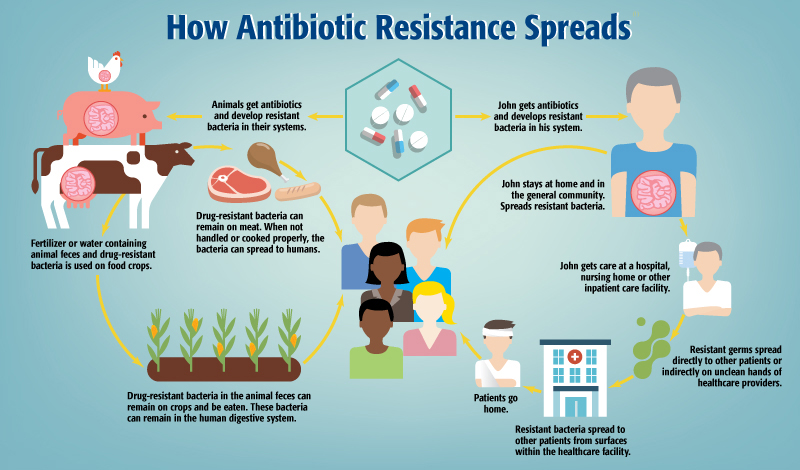John Cassim

The Zimbabwean government launched its second National Action Plan for Antimicrobial Resistance (NAP 2.0) 2024–2028 on Thursday. This launch comes amid reports that drug resistance complications caused 15,800 deaths in Zimbabwe in 2019.
Globally, antimicrobial resistance (AMR) currently causes an estimated 700,000 deaths annually, exceeding deaths from cancer and many other non-communicable diseases. The World Health Organization (WHO) estimates that, if left unchecked, AMR will lead to 10 million deaths per year by 2050, reduce global GDP by approximately 3.5%, and incur cumulative costs of up to US$100 trillion annually.
Zimbabwe requires US$45 million to effectively implement the second phase of its AMR National Action Plan. The Fleming Fund has provided a US$3.5 million grant as the United Kingdoms’s (UK) contribution.
The UK, through the Fleming Fund, has collaborated with the Zimbabwean government and other donors to implement AMR combatting programs since 2018, guided by the One Health National Action Plan. The first phase of this multi-donor effort, totalling approximately US$13 million with the UK as a 50% funder, ended in November 2022.
“Today we’re here to launch the third phase, demonstrating this long-term commitment of the AMR National Action Plan, NAP 2.0. I believe you costed it to the value of about 45 million dollars and the Fleming Fund is offering its grant worth US$ 3.5 million as the UK’s contribution to that,” said Dr. Jo Abbott, UK’s Zimbabwe Development Director.
“If we fail to act now, the repercussions will be catastrophic, not only in terms of lives lost but also on the economic toll on our families and communities.
Ladies and gentlemen, I have great faith in the resilience of Zimbabweans. With the launch of the 2024-2028 National Action Plan for Antimicrobial Resistance, we are collectively sending a clear message,” stated Dr. Pius Essandoh, WHO Zimbabwe Medical Officer.

Dr. Patrice Talla, the Food and Agriculture Organisation (FAO) Representative for Zimbabwe, warned against the misuse and overuse of antimicrobials in poultry and livestock farming, stating, “The misuse and overuse of antimicrobials in poultry and livestock farming can accelerate the spread of resistant pathogens, threatening both animal and human health.”
A Coordinated Approach to One Health
Dr. Agnes Mahomva, Public Health Advisor to the President and Cabinet, emphasized the importance of NAP 2.0 within the broader One Health initiative.
“This is one of the priorities of the One Health initiative or program that the Zimbabwean government is running,” she stated.
Dr. Mahomva highlighted the need for inter-sectoral cooperation and collaboration among ministries, departments, agencies, and partners to effectively implement One Health initiatives.
She acknowledged past challenges, including independent work and duplication of efforts, but stressed that the Office of the President and Cabinet (OPC) is now facilitating high-level coordination to ensure effective resource utilization.
“AMR is one of those priorities,” she affirmed.
Progress and Future Directions in Agriculture
Dr. Pious Makaya, Chief Director of the Directorate of Veterinary Technical Services, reflected on the progress made in combating AMR within the agricultural sector, citing improvements in surveillance systems, laboratory capacity, and the overall One Health approach.
“NAP1, our first national action plan, was instrumental in laying the foundation for our fight against AMR,” he explained.
Dr. Makaya detailed developments in capacity building, including laboratory renovations and upgrades supported by the Fleming Fund, and training programs for professionals.
He expressed gratitude to partners like the FAO, WHO, and Fleming Fund for their contributions. “It is through this collaborative approach, combining efforts from all sectors, that we can tackle the challenge of AMR effectively,” he emphasised.
He also noted the global commitment to addressing AMR made at the UN General Assembly in September 2024.
“As we launch NAP 2.0 today, and concurrently launch the Fleming Farm Country Grant Phase 2, we must acknowledge that the path ahead will require continued collaboration, dedication, and collective effort,” he concluded.

The Crucial Role of the Environment
Mr. Abu Matiza, Deputy Director, Ministry of Environment, Climate and Wildlife, delivered a statement on behalf of Environment, Climate and Wildlife Minister, Sithembiso Nyoni, underscoring the critical role of the environment in the emergence and spread of AMR.
“My Ministry recognises the critical role the environment plays in the emergence and spread of AMR,” the statement read.
It explained how antimicrobial residues in ecosystems contribute to resistance development and identified key pollutant sources, including poor sanitation, sewage, pharmaceutical and healthcare waste, and agricultural practices.
The statement also highlighted the impact of global warming and climate change on AMR spread, emphasising, “The environment and the AMR pandemic are closely linked.”
A Call to Action for All
Dr. Douglas Mombeshora, Minister of Health and Child Care, described AMR as a global crisis that threatens health systems, food security, and the future.
He outlined the progress made under the first National Action Plan, including improvements in medicine provision, healthcare worker training, laboratory upgrades, and research initiatives.
He then detailed the five pillars of NAP 2.0: raising awareness, strengthening surveillance, promoting prevention, optimizing antimicrobial use, and fostering research and innovation.
He emphasised the One Health approach and highlighted key updates, including a stronger governance framework, targeted interventions, addressing plant agriculture and aquaculture, engaging the private sector and civil society, monitoring and evaluation, and realistic costing.
“This plan isn’t just about policies, it’s about people,” he stated.
“Let me be honest with you, this won’t be easy. Challenges remain,” he acknowledged, mentioning awareness gaps, laboratory capacity needs, and the importance of regulation enforcement.
